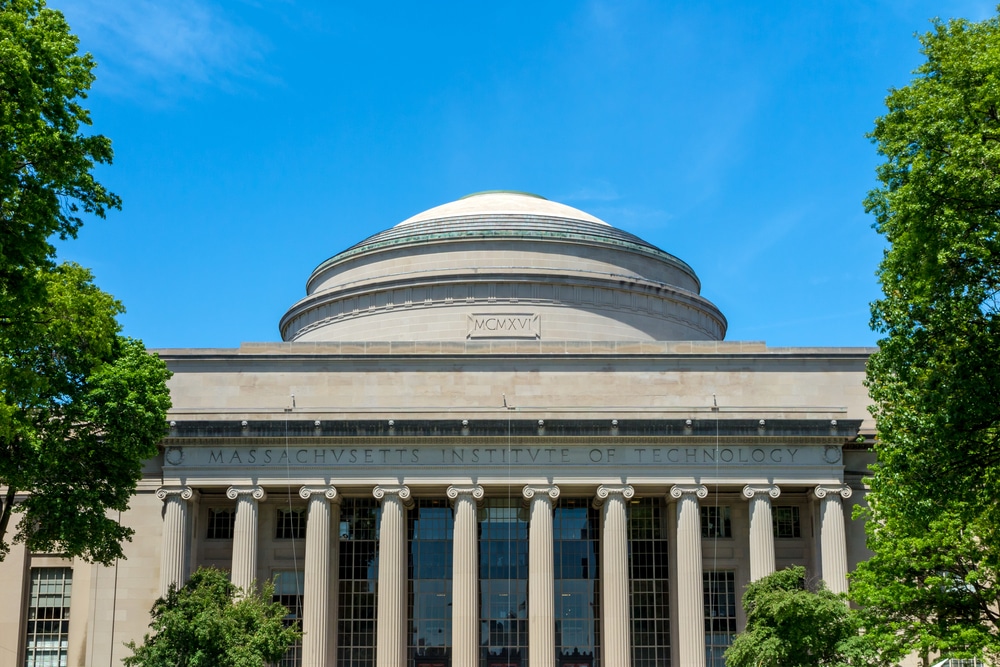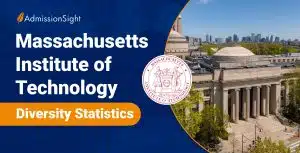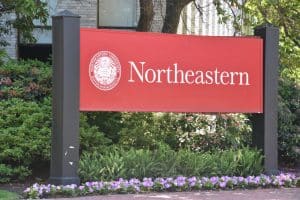Exploring MIT’s Endowment: A Look at the University’s Investment Strategy
Endowments have long been the backbone of university finances, providing a continuous source of funding. The Massachusetts Institute of Technology (MIT) is not an exception to this rule. MIT’s endowment is a crucial financial strength source supporting everything from student scholarships to cutting-edge research.
Understanding the MIT Endowment
The Basics of University Endowments
A university endowment consists of donated money or assets invested to grow over time. The primary purpose of these funds is to advance the institution’s mission and ensure its long-term financial health. A small part of the return on these investments is spent each year – generally around 5% – on various university expenses, while the capital and the rest of the income are reinvested to secure the future of the institution.
University endowments play a crucial role in providing financial stability and support to educational institutions. They serve as a perpetual source of income, allowing universities to fund scholarships, research projects, faculty salaries, campus infrastructure, and other important initiatives. Without endowments, universities would heavily rely on tuition fees and government funding, making them more vulnerable to financial uncertainties.
The Size and Scope of MIT’s Endowment
MIT’s endowment is one of the largest in the United States. As of the fiscal year 2022, the endowment stands at $24.6 billion. This wealth is the result of successful investments and generous donations from the institution’s alumni, faculty, and friends. The endowment funds are spread across diverse assets, from traditional equities and bonds to alternative investments like venture capital and real estate.
The significant size of MIT’s endowment allows the institution to pursue its mission of advancing knowledge and educating future leaders without solely relying on tuition fees. It provides a stable financial foundation that enables the university to attract top-notch faculty, support groundbreaking research, and offer generous financial aid packages to students from diverse backgrounds.
MIT’s endowment also plays a vital role in fostering innovation and entrepreneurship. The institution supports startups and emerging technologies through strategic investments in venture capital, creating a vibrant ecosystem that encourages collaboration between academia and industry. This symbiotic relationship between MIT’s endowment and entrepreneurial spirit has resulted in numerous successful spin-off companies and groundbreaking inventions that have transformed industries.
Furthermore, MIT’s endowment allows the institution to maintain and enhance its world-class campus infrastructure. From state-of-the-art research facilities to cutting-edge classrooms and student housing, the endowment funds contribute to creating an environment that fosters creativity, collaboration, and interdisciplinary learning. The endowment’s support also extends to maintaining the institution’s libraries, museums, and other cultural resources, enriching the academic experience for students, faculty, and the broader community.
In addition to its financial impact, MIT’s endowment serves as a testament to the strong and enduring relationship between the institution and its stakeholders. Alumni, faculty, and friends of MIT contribute to the endowment to give back and ensure that future generations of students have access to the same transformative educational opportunities they received. The endowment represents a shared commitment to the values and mission of MIT, creating a sense of community and pride among its supporters.
The Philosophy Behind MIT’s Investment Strategy
When it comes to investment, The Massachusetts Institute of Technology Investment Management Company (MITIMCo) takes a meticulous and forward-thinking approach. The university understands the importance of long-term planning and sustainable returns to support its operations and keep up with inflation. To achieve this, MIT focuses on balancing risk and return, ensuring that its investment portfolio is well-diversified across various asset classes. By adopting this approach, MIT has consistently surpassed its benchmarks over the long run, solidifying its financial position and enabling it to thrive.
Long-Term Investment Approach
MIT’s commitment to a long-term investment strategy is deeply rooted in its mission to foster innovation and advance knowledge. Taking a patient and calculated approach, the university can weather short-term market fluctuations and focus on generating sustainable returns. This approach allows MIT to allocate its resources effectively, supporting its core academic and research activities while ensuring the institution’s long-term financial stability.
MIT’s investment team consists of seasoned professionals who possess a deep understanding of the financial markets and a keen eye for identifying promising investment opportunities. They conduct extensive research and analysis to identify assets that align with the university’s long-term goals. This meticulous approach ensures that MIT’s investment decisions are based on thorough evaluation and strategic foresight.
Diversification and Risk Management
MIT recognizes that diversification is a crucial aspect of effective risk management. By spreading its investments across a broad range of asset classes, including equities, fixed income, real estate, and alternative investments, the university minimizes the impact of any single investment’s performance on its overall portfolio. This diversification strategy allows MIT to mitigate risk and protect its endowment from market downturns.
Moreover, MIT’s investment team continuously monitors and evaluates the risk exposure of its portfolio. They employ sophisticated risk management tools and techniques to identify potential vulnerabilities and take proactive measures to address them. This proactive approach ensures that the university’s investments are well-positioned to withstand various market conditions, providing stability and resilience to its financial position.
MIT’s commitment to risk management extends beyond diversification. The university also emphasizes rigorous due diligence and ongoing monitoring of its investment managers. By carefully selecting and regularly assessing external investment partners, MIT ensures that its endowment is entrusted to professionals who share its long-term investment philosophy and adhere to the highest standards of fiduciary responsibility.
In conclusion, MIT’s investment philosophy is built upon a long-term view, diversification, and risk management. By adopting these principles, the university has consistently achieved sustainable returns, protected its endowment from market volatility, and positioned itself for long-term success. MIT’s investment strategy reflects its commitment to excellence and its dedication to supporting its academic and research endeavors for generations to come.
Key Components of the MIT Endowment
Asset Allocation
Asset allocation plays a critical role in managing the MIT endowment. The portfolio is spread across a number of different asset classes, including domestic and international stocks, bonds, real estate, and alternative investments. This diversity helps guard against volatility in any investment area and enhances the chances of achieving consistent returns over time.
In addition to the traditional asset classes, the MIT endowment includes investments in commodities such as gold and oil. These investments provide a hedge against inflation and can help to diversify the overall portfolio. The endowment team carefully monitors commodity markets and makes strategic decisions to optimize returns.
Furthermore, the endowment also includes investments in emerging markets. MIT recognizes the potential for growth and high returns in these markets and actively seeks opportunities to invest in companies and projects that drive economic development in these regions. This provides financial returns and aligns with MIT’s global impact and sustainability commitment.
Investment in Innovation and Technology
MIT has always been at the forefront of innovation and technology, reflected in its endowment investment strategy. The university has a significant allocation towards venture capital investments – particularly in tech and biotech startups. This approach delivers higher potential returns and aligns with MIT’s mission of advancing knowledge and driving innovation.
In addition to venture capital, the MIT endowment invests in private equity funds focusing on technology and innovation. These funds provide capital to companies in their growth stages, helping them to scale and bring their innovative ideas to market. By investing in these funds, MIT supports the growth of promising startups and benefits from the potential financial returns as these companies succeed.
Furthermore, the endowment team actively seeks out opportunities to invest in cutting-edge technologies and research projects that have the potential to disrupt industries and create new markets. By investing in these areas, MIT not only stays at the forefront of technological advancements but also contributes to the overall advancement of society.
The Impact of the Endowment on MIT
Funding for Scholarships and Research
The MIT endowment plays an essential role in supporting scholarships and research activities. A significant portion of the endowment’s return is used to provide financial aid to undergraduate and graduate students, thus helping to ensure that MIT remains accessible to all talented students, regardless of their financial circumstances.
With the endowment’s support, MIT can offer a wide range of scholarships to attract and retain the brightest minds from around the world. These scholarships cover tuition fees and provide additional support for living expenses, textbooks, and research materials. This financial assistance allows students to fully immerse themselves in their studies and pursue groundbreaking research without the burden of financial constraints.
In addition to scholarships, the endowment supports a wide range of research projects across various disciplines at MIT. This funding enables faculty members and students to explore innovative ideas, push the boundaries of knowledge, and make significant contributions to their respective fields. The endowment’s support for research benefits the MIT community and has far-reaching impacts on society, driving technological advancements and addressing pressing global challenges.
Ensuring Financial Stability for the University
Beyond its direct contributions to scholarships and research, the endowment is equally crucial in ensuring MIT’s financial stability. The returns from this sizable financial reserve help to stabilize the institution’s operating budget, shielding it from fluctuations in other revenue sources such as tuition fees and government grants.
By maintaining a strong endowment, MIT is able to weather economic downturns and financial uncertainties, ensuring the continued operation of its world-class educational and research programs. This financial stability allows the university to attract and retain top-tier faculty members, invest in state-of-the-art facilities and equipment, and provide a rich learning environment for its students.
Moreover, the endowment’s financial stability enables MIT to embark on long-term strategic initiatives that have a lasting impact on the institution and its surrounding community. For example, the endowment has supported the establishment of interdisciplinary research centers, the expansion of campus infrastructure, and the development of innovative educational programs. These initiatives enhance MIT’s reputation as a leading academic institution and contribute to the economic growth and development of the local and global communities it serves.
Criticisms and Controversies Surrounding the Endowment
The Massachusetts Institute of Technology (MIT) is renowned for its exceptional academic programs, groundbreaking research, and technological advancements. However, despite its impressive financial performance, MIT’s endowment has not been immune to criticisms and controversies. These issues primarily revolve around ethical investment choices and transparency surrounding the endowment.
Questions of Ethical Investment
One of the main criticisms of MIT’s endowment is its investments in fossil fuel companies. Some stakeholders argue that these holdings contradict MIT’s commitment to addressing climate change. They question whether it is ethically responsible for the university to profit from industries that contribute to environmental degradation and global warming.
However, it is important to note that MIT has taken steps to address these concerns. The university has established the MIT Climate and Sustainability Consortium, which brings together researchers, industry leaders, and policymakers to collaborate on finding sustainable solutions. Also, MIT has committed to reducing its carbon footprint and has invested in renewable energy projects.
The Debate Over Endowment Transparency
Another recurring topic of debate surrounding MIT’s endowment is the level of transparency regarding its investments. Critics argue that the university should provide more detailed information about its investment holdings and decision-making process. They contend that increased transparency would allow stakeholders to understand better how their funds are being managed and whether they align with their values.
On the other hand, MIT must keep certain information confidential to protect its competitive position. The university argues that disclosing too much information could harm its ability to negotiate favorable terms and secure advantageous investments. However, MIT acknowledges the importance of communicating its investment philosophy and practices to its stakeholders and has made efforts to provide more transparency in recent years.
MIT has implemented initiatives such as annual reports that outline the endowment’s performance, investment strategies, and responsible investing practices. These reports aim to provide stakeholders with a comprehensive overview of the endowment’s activities while respecting the need for confidentiality in certain areas.
In conclusion, the MIT endowment is a powerful financial tool that has been effectively managed to ensure the growth and stability of one of the world’s leading universities. While criticisms regarding ethical investment choices and transparency persist, MIT has demonstrated its commitment to addressing these concerns through initiatives focused on sustainability and increased communication with stakeholders. By continuously evaluating and adapting its investment practices, MIT strives to align its endowment with its mission of advancing knowledge and positively impacting society.
If you need help putting the finishing touches on your college applications, at AdmissionSight, we have over 10 years of experience guiding students through the competitive admissions process.
AdmissionSight can help you put your best foot forward when applying to college this fall. Contact us today for more information on our services.








































